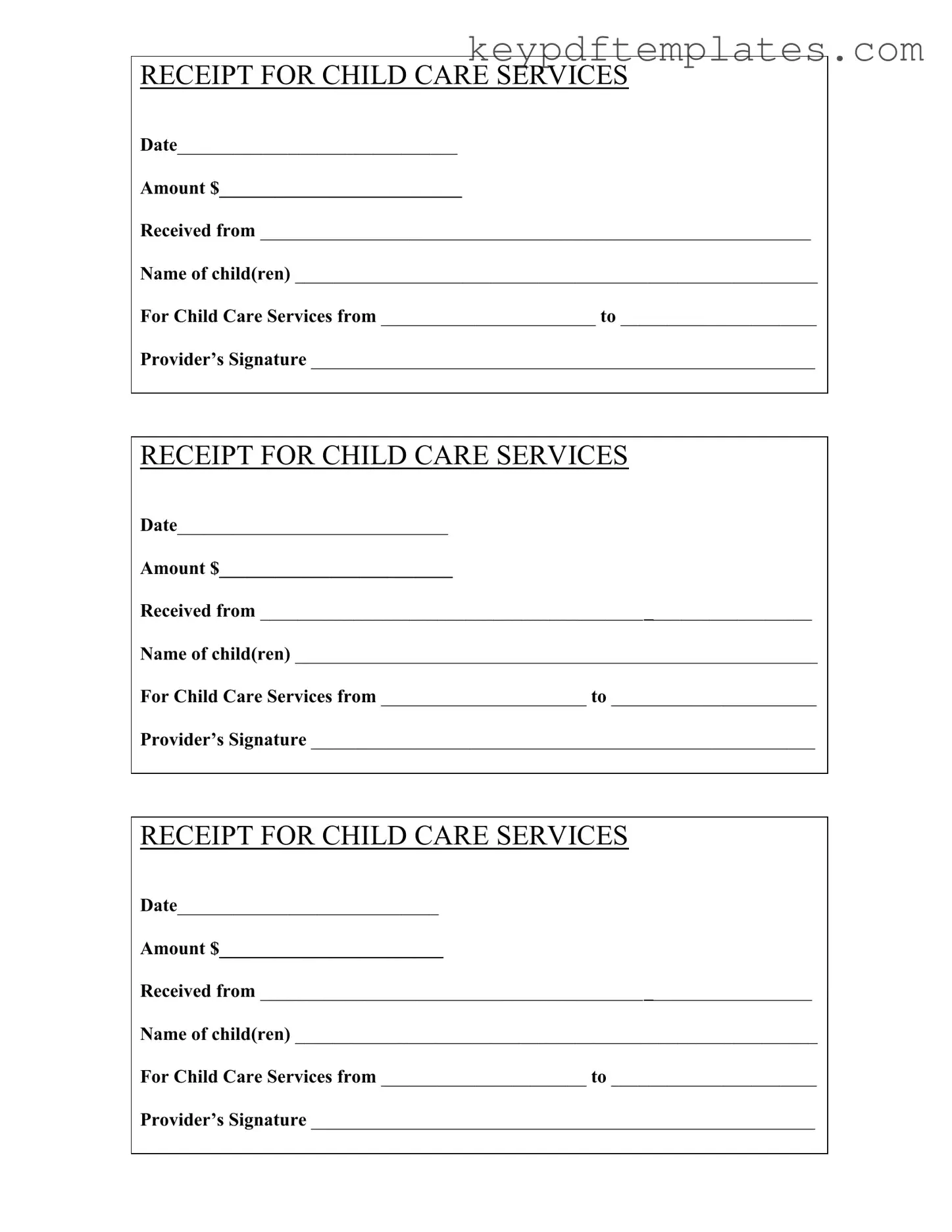Get Childcare Receipt Form
The Childcare Receipt form is a crucial document used by parents and childcare providers to record the payment for childcare services. This form not only helps in tracking expenses but also serves as proof of payment for tax purposes. Understanding how to properly fill out and utilize this form can simplify financial record-keeping for families.
Modify Document Online
